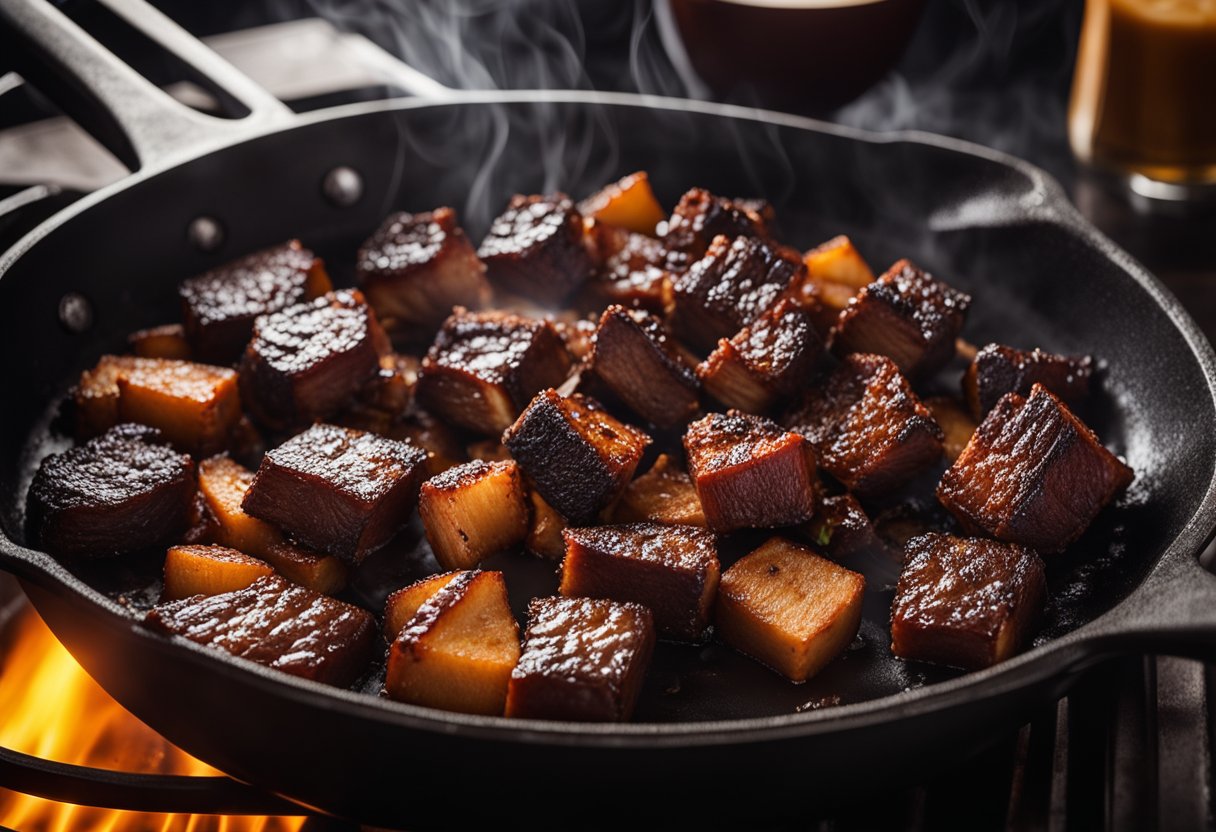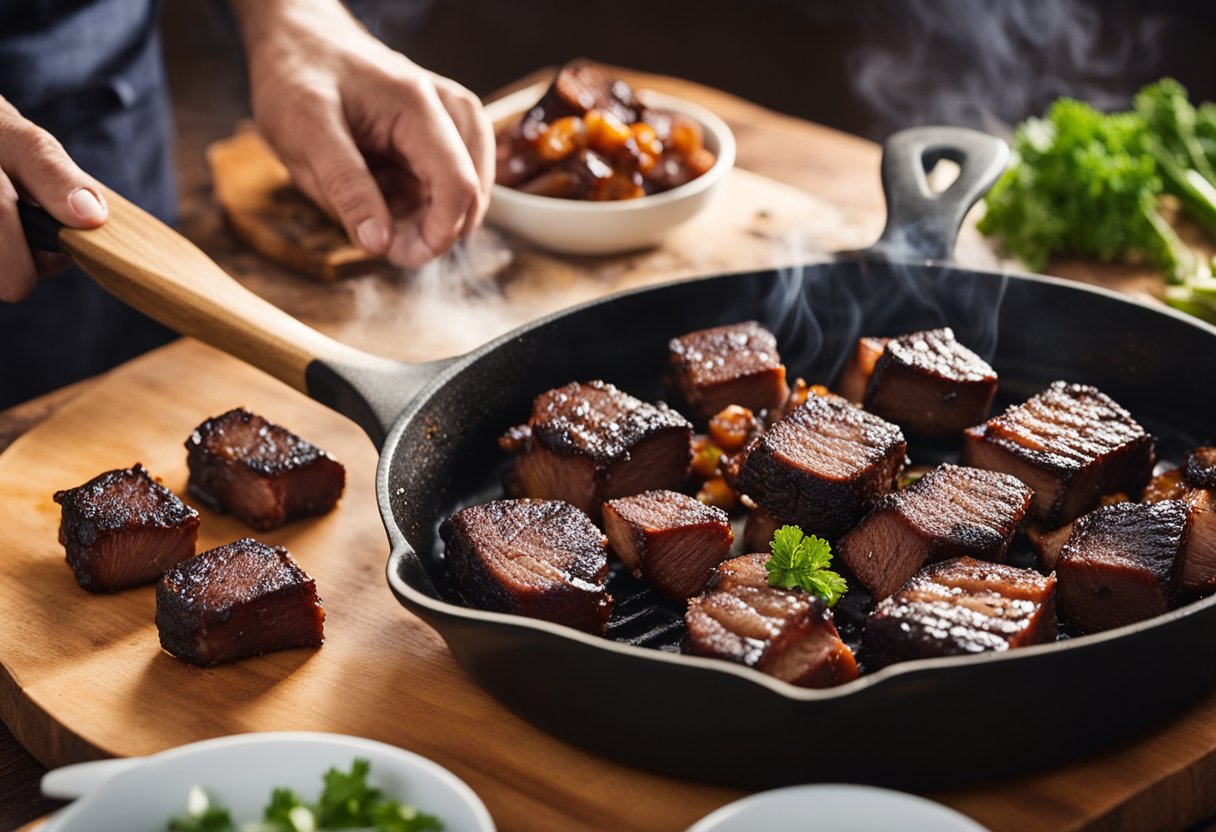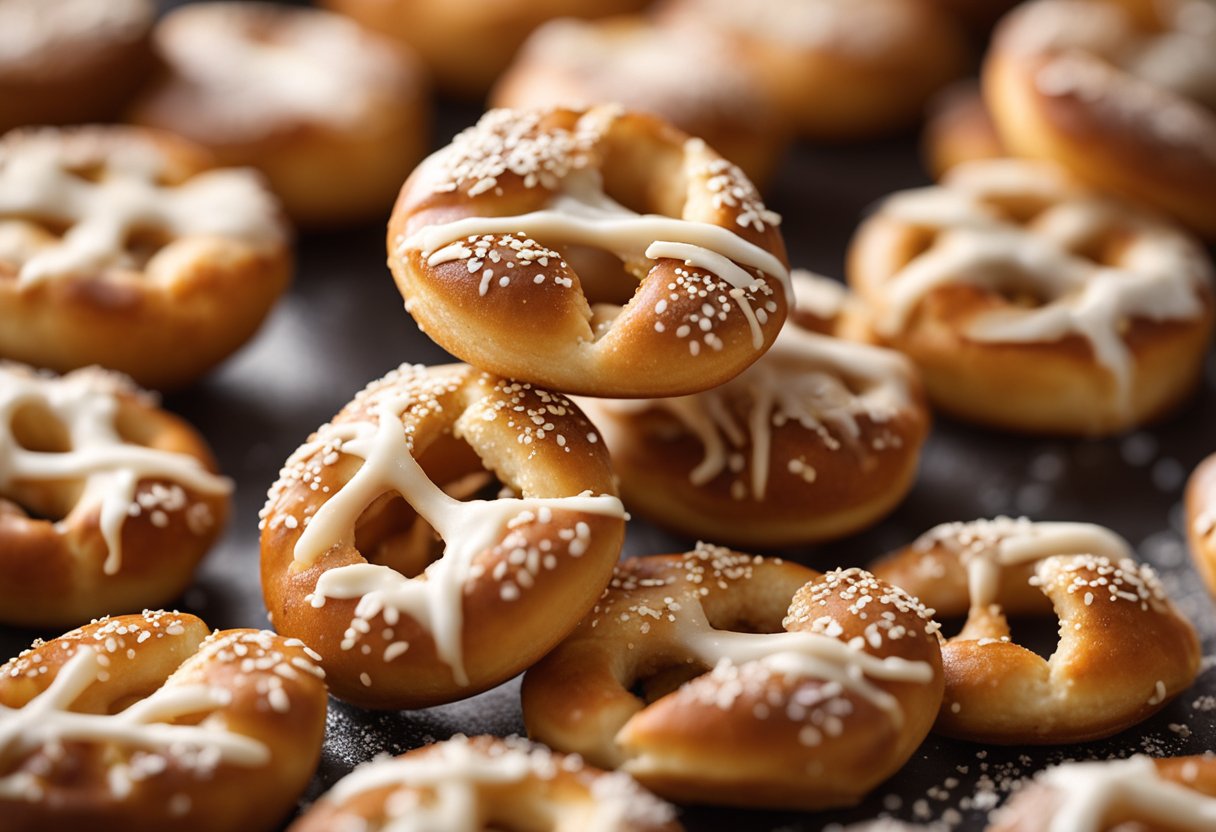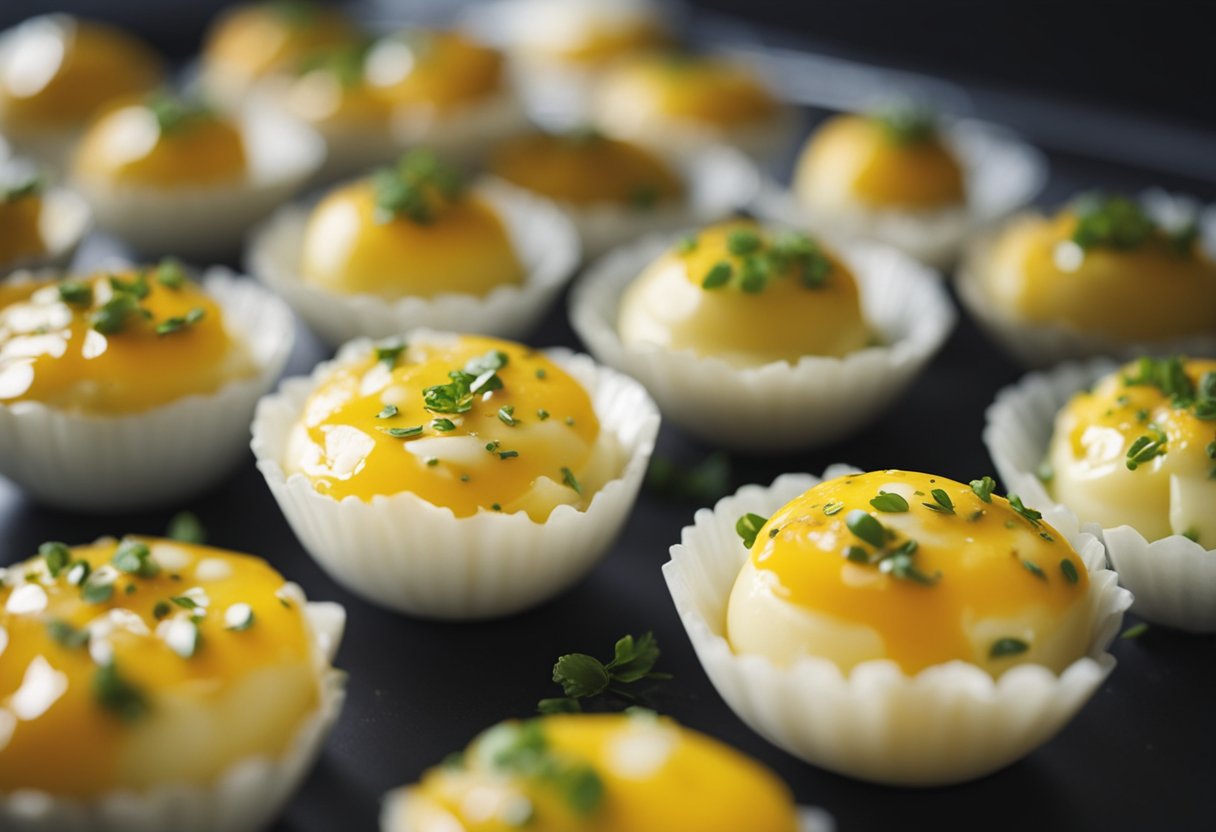I’m happy to help you with that! Reheating burnt ends can be a tricky task, as they can easily dry out and lose their flavor. However, with the right techniques, you can revive these delicious meaty bites to their former glory.
In this article, I will share my tips and tricks on how to reheat burnt ends to perfection, ensuring that they remain moist, tender, and full of flavor.

First, we will discuss how to prepare burnt ends for reheating, including how to store them properly and how to ensure that they are still safe to eat.
Then, we will cover different reheating methods, such as oven, stovetop, and sous vide, and the pros and cons of each method.
We’ll also discuss how to ensure moisture and flavor when reheating burnt ends, including adding a moisture barrier and using a meat thermometer to check the internal temperature.
Finally, we’ll go over some common reheating mistakes to avoid and provide tips on how to serve and pair your reheated burnt ends.
Whether you’re a BBQ enthusiast or just looking to enjoy some leftover burnt ends, this article will provide you with everything you need to know to reheat them to perfection.
Key Takeaways
- Properly preparing and storing burnt ends is key to ensuring they are safe to eat and maintain their flavor.
- Reheating burnt ends in the oven is the most popular method, but stovetop and sous vide methods can also be effective.
- Adding a moisture barrier, using a meat thermometer, and avoiding common reheating mistakes can help ensure that your reheated burnt ends are moist, tender, and full of flavor.
Preparing Burnt Ends for Reheating
Before reheating burnt ends, it is important to properly prepare them. This includes thawing frozen burnt ends and bringing them to room temperature.
Here are the steps I follow to prepare burnt ends for reheating:
Thawing Frozen Burnt Ends
If your burnt ends are frozen, it is important to thaw them properly before reheating. Here are two methods for thawing frozen burnt ends:
- In the refrigerator: Place the frozen burnt ends in an airtight container or wrap them tightly in aluminum foil. Place them in the refrigerator and allow them to thaw overnight.
- In cold water: Place the frozen burnt ends in a leak-proof bag and submerge them in cold water. Change the water every 30 minutes until the burnt ends are thawed.
Bringing to Room Temperature
Before reheating, it is important to bring the burnt ends to room temperature. This ensures that the burnt ends will heat evenly and reduces the risk of overcooking.
Here are the steps I follow to bring burnt ends to room temperature:
- Remove the burnt ends from the refrigerator or cold water.
- Remove them from any packaging or foil.
- Place the burnt ends on a plate or baking sheet and allow them to sit at room temperature for 30-60 minutes.
By following these simple steps, you can properly prepare your burnt ends for reheating. This will ensure that they are evenly heated and delicious.
Reheating Methods
When it comes to reheating burnt ends, there are several methods to choose from. Some methods are quick, while others require a little more time and effort.
Here are the most popular reheating methods:
Oven Reheating
Oven reheating is the most common method for reheating burnt ends. To reheat your burnt ends in the oven, preheat your oven to 325°F. Next, place your burnt ends in an oven-safe dish or baking sheet.
Cover the dish with aluminum foil or a lid to prevent the meat from drying out. Place the dish in the oven and bake for 10-15 minutes or until the internal temperature of the meat reaches 165°F.
Stovetop Reheating
Stovetop reheating is a quick and easy method for reheating burnt ends. To reheat your burnt ends on the stove, place them in a skillet over medium heat. Add a small amount of water or barbecue sauce to the skillet to prevent the meat from sticking.
Cover the skillet with a lid and cook for 5-7 minutes or until the internal temperature of the meat reaches 165°F.
Grill Reheating
Grill reheating is a great way to add some smoky flavor to your reheated burnt ends. To reheat your burnt ends on the grill, preheat your grill to medium-high heat.
Place your burnt ends on the grill and cook for 5-7 minutes on each side or until the internal temperature of the meat reaches 165°F.
Microwave Reheating
Microwave reheating is the quickest method for reheating burnt ends. To reheat your burnt ends in the microwave, place them in a microwave-safe dish and cover with a damp paper towel.
Microwave on high for 1-2 minutes or until the internal temperature of the meat reaches 165°F.
No matter which method you choose, be sure to monitor the internal temperature of the meat to ensure that it is fully reheated and safe to eat.
Also, be sure to use an oven-safe dish, baking sheet, or skillet when reheating your burnt ends to prevent any accidents in the kitchen.
Ensuring Moisture and Flavor
When reheating burnt ends, it is important to ensure that they retain their moisture and flavor. Here are some tips to help you achieve that:
Using Sauces and Glazes
One way to add moisture and flavor to your reheated burnt ends is by using sauces and glazes. Barbecue sauce is a popular choice, as it adds a smoky and tangy flavor to the meat.
You can also try making your own glaze by mixing honey, butter, and your favorite seasonings. Brush the sauce or glaze onto the burnt ends before reheating, or drizzle it on afterwards for extra flavor.
Covering with Foil to Retain Juiciness
Another way to ensure that your burnt ends stay moist and juicy is by covering them with foil during the reheating process. This helps to trap in steam and prevent the meat from drying out.
Place the burnt ends in a foil-lined baking dish, cover them with foil, and bake them in the oven at a low temperature (around 250°F) until they are heated through.
You can also try adding a small amount of liquid, such as water or broth, to the baking dish to create steam and add moisture.
By using sauces and glazes, and covering your burnt ends with foil, you can help to ensure that they retain their moisture and flavor when reheating. Experiment with different sauces and seasonings to find the perfect combination for your taste buds.
Avoiding Common Reheating Mistakes
As a barbecue enthusiast, I know the importance of reheating burnt ends to perfection. However, it’s easy to make mistakes that can ruin the tenderness, smoky flavor, and overall quality of the meat.
Here are some tips to help you avoid common reheating mistakes:
Preventing Drying Out
One of the most common mistakes when reheating burnt ends is allowing them to dry out. To prevent this, it’s important to use a moisture barrier such as a small dish of water in the oven or a splash of broth or barbecue sauce in the baking dish or skillet.
This will help keep the burnt ends juicy and tender.
Another way to prevent drying out is to cover the burnt ends with foil during the first part of the reheating process. This will trap moisture and prevent it from evaporating. However, be careful not to overcook the meat as this can cause it to dry out as well.
Avoiding Overcooking
Overcooking is another common mistake when reheating burnt ends. To avoid this, it’s important to use a meat thermometer to check the internal temperature of the meat.
The ideal temperature for reheating burnt ends is around 165°F (74°C). Once the meat reaches this temperature, remove it from the heat source immediately to prevent overcooking.
It’s also important to avoid overcrowding the baking dish or skillet. Overcrowding can cause the meat to cook unevenly and result in overcooked and undercooked pieces. To prevent this, use a larger baking dish or skillet or reheat the burnt ends in batches.
By following these tips, you can avoid common reheating mistakes and enjoy tender, smoky, and flavorful burnt ends even as leftovers.
Serving and Pairing

When it comes to serving reheated burnt ends, there are a variety of side dishes and creative ways to serve them that can complement their smoky flavor and tender texture.
Here are some ideas to get you started:
Side Dishes for Burnt Ends
Coleslaw and baked beans are classic side dishes that pair well with burnt ends. The creaminess of the coleslaw and the sweetness of the baked beans help balance out the smoky flavor of the meat.
You can also serve burnt ends with roasted vegetables, such as Brussels sprouts or carrots, to add a healthy twist to the meal.
Creative Ways to Serve Reheated Burnt Ends
One creative way to serve reheated burnt ends is to use them as a filling for tacos. Simply warm up some tortillas, add a few pieces of burnt ends, and top with your favorite taco toppings, such as shredded cheese, salsa, and avocado.
Another option is to use the burnt ends as a topping for salads. Simply chop up the reheated burnt ends and sprinkle them on top of a bed of greens, along with other toppings such as tomatoes, onions, and croutons.
You can also drizzle your favorite salad dressing on top for added flavor.
Overall, there are many ways to serve and pair reheated burnt ends that can satisfy your appetite and impress your guests.
Whether you prefer classic side dishes or more creative options, burnt ends can be a versatile and delicious appetizer or main course.
Frequently Asked Questions
What is the best method to reheat pork belly burnt ends to maintain their juiciness?
The best method to reheat pork belly burnt ends while maintaining their juiciness is to use an oven. Preheat the oven to 250°F (120°C) and place the burnt ends in a single layer on a baking sheet lined with foil.
Reheat the burnt ends in the oven for 10-15 minutes or until they reach an internal temperature of 165°F (74°C). This low heat will help maintain the tenderness and smoky flavor.
Can you reheat burnt ends using a sous vide technique without overcooking them?
Yes, you can reheat burnt ends using a sous vide technique without overcooking them. Set the sous vide machine to 165°F (74°C) and place the burnt ends in a vacuum-sealed bag.
Submerge the bag in the water and cook for 45 minutes. This method will keep the burnt ends moist and tender.
What are the steps to reheat sausages in the oven without drying them out?
To reheat sausages in the oven without drying them out, preheat the oven to 350°F (175°C). Wrap the sausages in foil and place them on a baking sheet.
Bake the sausages in the oven for 10-15 minutes or until they reach an internal temperature of 165°F (74°C). This method will ensure that the sausages are heated through without drying them out.
Is it possible to reheat sausage rolls in the oven and keep them crispy?
Yes, it is possible to reheat sausage rolls in the oven and keep them crispy. Preheat the oven to 350°F (175°C) and place the sausage rolls on a baking sheet.
Bake the sausage rolls in the oven for 10-15 minutes or until they are heated through and crispy.
How can you heat fully cooked smoked sausage in an air fryer effectively?
To heat fully cooked smoked sausage in an air fryer effectively, preheat the air fryer to 350°F (175°C). Place the smoked sausage in the air fryer basket and cook for 5-7 minutes or until they are heated through.
This method will ensure that the smoked sausage is heated evenly and retains its juiciness.
What’s the ideal way to reheat leftover burnt ends to preserve their flavor and texture?
The ideal way to reheat leftover burnt ends to preserve their flavor and texture is to use a combination of microwave and oven. Start by microwaving the burnt ends for 30 seconds to 1 minute to take the chill off.
Then, preheat the oven to 250°F (120°C) and place the burnt ends in a single layer on a baking sheet lined with foil. Reheat the burnt ends in the oven for 5-7 minutes or until they reach an internal temperature of 165°F (74°C).
This method will ensure that the burnt ends are heated through without overcooking and losing their flavor and texture.




